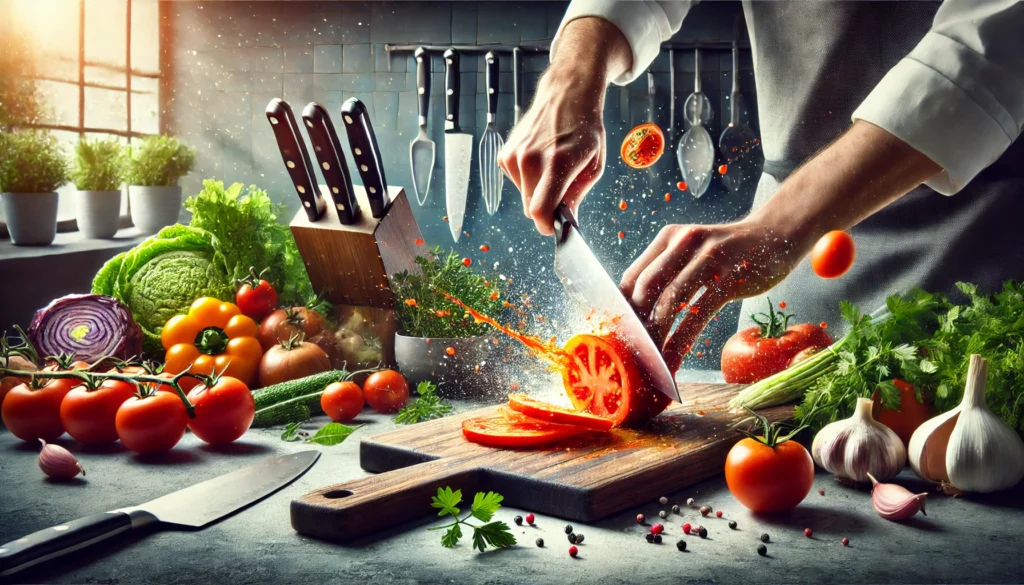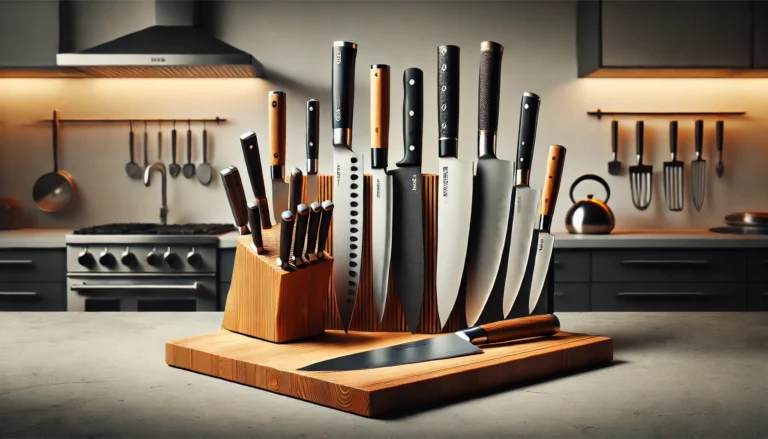
In the culinary world, the precision and effectiveness of a knife can make or break a dish. Many chefs and home cooks alike notice that specific cutting techniques, often called “knife hits,” yield more potent results when preparing ingredients. But what makes these knife hits so effective? In this blog post, we will delve into the reasons behind the potency of knife hits, explore various cutting techniques, and provide some practical tips to enhance your kitchen skills.
Why Are Knife Hits So Potent? (Short Answer)
Knife hits are potent because they help release flavors by cutting ingredients precisely. A sharp knife reduces food damage, keeping juices and aromas locked in. Proper knife techniques ensure even cooking and enhance the dish’s texture. They also make food look more appealing by creating uniform pieces. Good knife skills lead to tastier and better-looking meals.
Understanding Knife Hits
What Are Knife Hits?
A “knife hit” refers to the moment when the blade of a knife makes contact with an ingredient. This seemingly simple action involves several factors, including the angle, speed, and force applied, which together determine the quality and effectiveness of the cut.
Importance in Cooking
Knife hits are crucial for several reasons:
- Flavor Release:
Proper cutting techniques release the flavors and aromas of ingredients more effectively.
- Texture Control:
Consistent and precise cuts impact the texture of the dish.
- Visual Appeal:
Uniform cuts contribute to the overall presentation of the dish.
The Science Behind Potent Knife Hits
Sharpness of the Blade
One primary reason knife hits are so potent is the sharpness of the blade. A sharp knife makes cleaner cuts, reducing the cell damage in fruits, vegetables, and meats. This means less juice is lost, and the flavors remain concentrated.
- Razor-Sharp Edges: High-quality knives with razor-sharp edges can effortlessly slice through ingredients, ensuring that each cut is clean and precise.
- Maintenance: Regular sharpening and honing of the blade maintain effectiveness, leading to consistently potent knife hits.
Cutting Techniques
Different cutting techniques can influence the potency of knife hits. Some standard techniques include:
- Slicing:
Long, smooth strokes used for thin cuts.
- Dicing:
Cutting ingredients into small, uniform cubes.
- Chopping:
Quick, repetitive cuts for rough, uneven pieces.
- Mincing:
Finely chop ingredients into tiny pieces.
Each technique uniquely impacts the ingredient’s texture, flavor, and appearance.
Angle and Force
The angle at which the knife hits the ingredient and the force applied also play a significant role. A consistent angle ensures uniform cuts, while the proper force prevents crushing or tearing the ingredients.
- Consistent Angle: Maintaining a consistent angle while cutting helps achieve uniform slices, which cook evenly and look visually appealing.
- Controlled Force: Applying the proper force ensures the ingredient is cut cleanly without being squashed or bruised.
Practical Tips for Enhancing Knife Hits
Choosing the Right Knife
Different knives serve different purposes in the kitchen. Selecting the appropriate knife for the task at hand can significantly enhance the potency of your knife hits.
- Chef’s Knife:
Versatile and ideal for slicing, dicing, and chopping.
- Paring Knife:
Perfect for intricate tasks like peeling and mincing.
- Santoku Knife:
Excellent for precision cuts and fine slicing.
Proper Grip and Posture
How you hold the knife and position yourself can impact the effectiveness of your cuts. A proper grip and posture ensure better control and reduce the risk of injury.
- Grip: Hold the knife firmly with your dominant hand, ensuring your index finger and thumb are positioned near the base of the blade for better control.
- Posture: Stand with your feet shoulder-width apart and keep your non-dominant hand in a claw-like position to secure the ingredients.
Regular Maintenance
Maintaining your knives is crucial for ensuring potent knife hits. Regular sharpening and honing keep the blades in optimal condition.
- Sharpening:
Use a whetstone or knife sharpener to maintain the sharpness of your blades.
- Honing:
A honing rod helps realign the blade edge, ensuring it remains straight and sharp.
Practice and Patience
Mastering knife techniques takes time and practice. Start with simple tasks and gradually move on to more complex cuts as you gain confidence and skill.
- Beginner Techniques: Focus on essential slicing and chopping techniques before advancing to dicing and mincing.
- Practice Makes Perfect: Regularly practice knife skills to build muscle memory and improve precision.
Safety First
Safety is paramount when working with knives. Ensure your cutting surface is stable, and never rush through the cutting process.
- Stable Cutting Board:
Use a non-slip cutting board to prevent accidents.
- Mindful Cutting:
Pay attention to your movements and avoid distractions while cutting.
Conclusion:
Knife hits are more than just a basic kitchen technique; they are a fundamental aspect of culinary skill that can significantly impact a dish’s flavor, texture, and presentation. Understanding the science behind potent knife hits and honing your cutting techniques can elevate your cooking to new heights. Remember to choose the right knife, maintain proper grip and posture, keep your blades sharp, and practice regularly. With these tips, you’ll be well on your way to mastering the art of potent knife hits, making every meal a culinary masterpiece.
FAQs
Knife hits, or “hot knives,” pose significant risks. Heating metal objects can release harmful chemicals and cause burns. Inhaling the smoke from burning substances, like marijuana, can damage the lungs. Additionally, there’s a risk of accidental injury when handling sharp objects. Overall, it’s best to avoid knife hits and explore safer alternatives for consuming substances.
Knife hits offer a raw experience, heating cannabis between two hot knives and inhaling the vapor, resulting in a potent and immediate effect. This method differs from traditional smoking or vaping, providing a quick and intense high without the need for additional equipment. However, it also poses risks such as burns and inconsistent dosage, making it less popular among mainstream consumers.
Using any cannabis concentrate for knife hits is risky as it can release harmful chemicals when heated directly. It’s safer to stick to methods like dabbing or vaping for consuming concentrates. Prioritize your health and explore safer consumption alternatives.
If you’re feeling uneasy after the knife hits, pause and breathe deeply. Hydrate yourself and seek fresh air if possible. If symptoms persist or worsen, consider seeking medical assistance for safety.
Yes, knife hits can have legal consequences depending on the context and local laws. Using a knife in a harmful way can lead to charges like assault or possession of a weapon. It’s crucial to understand the laws in your area and use knives responsibly to avoid trouble.
People say the knife wins against a gun because, in close combat, the knife can be quicker and more versatile. Also, a knife doesn’t rely on ammunition, which can run out in critical moments. However, it depends on the situation and the person’s skill in wielding each weapon.
In certain situations, knives can be as dangerous as guns. Depending on factors like proximity and skill, both can inflict harm, but their threat varies in context.
People are more afraid of guns than knives because of the potential for a higher level of harm and greater distance from the threat.





